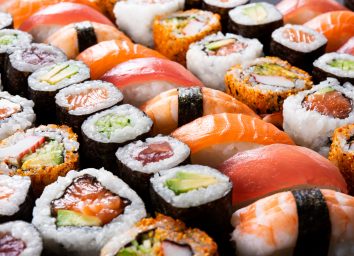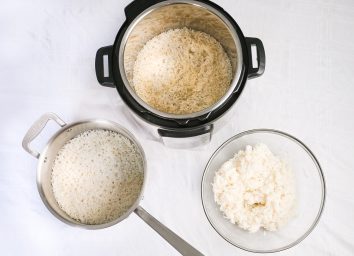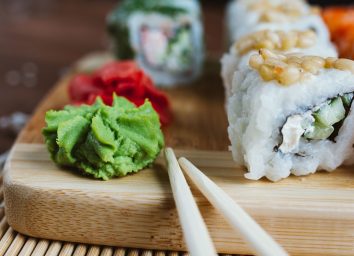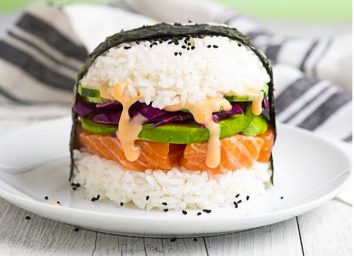The Worst Dish You Should Never Order at a Sushi Restaurant
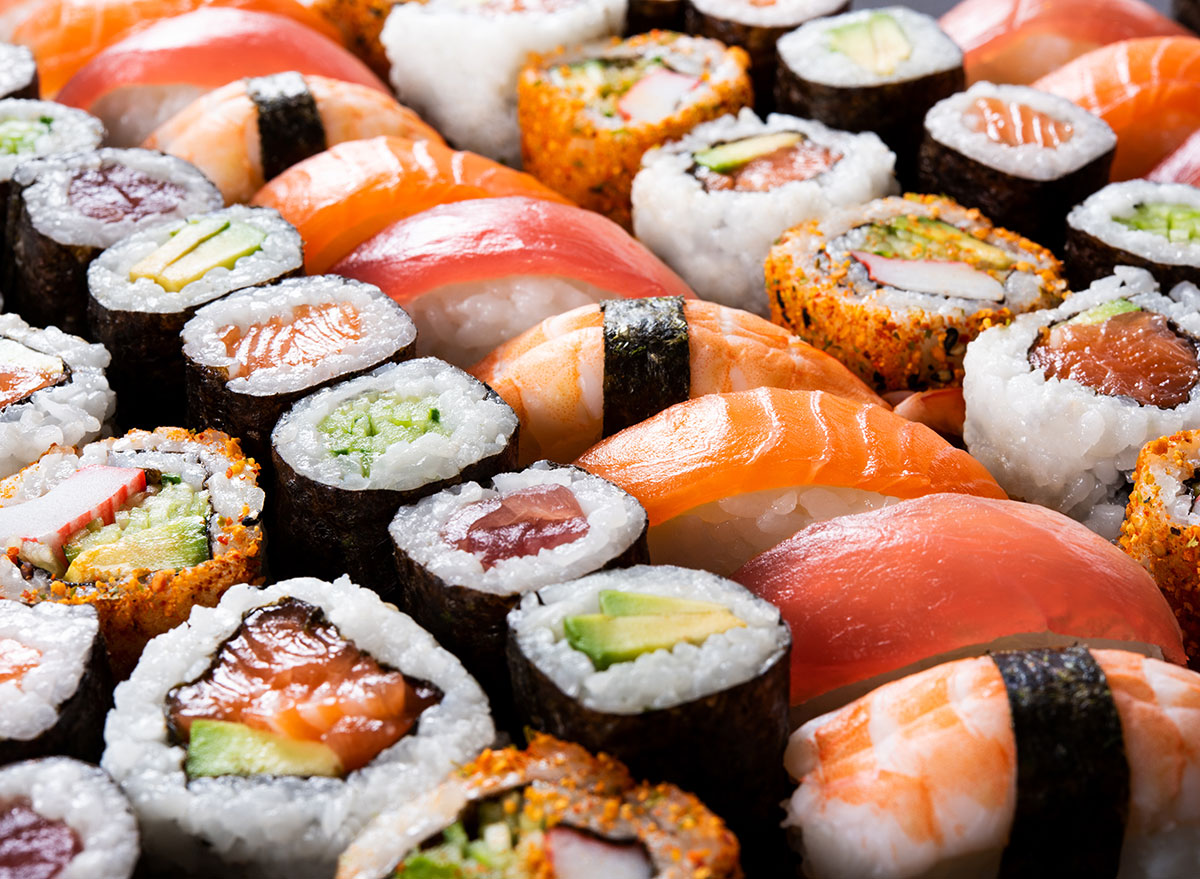
Sushi often gets that sought-after health halo as being a clean, healthy option for a meal. And yes, sushi can be super good for you, since it's often made with fish such as salmon, tuna, and eel, all of which is good for your heart health and for lowering inflammation. But when you're dining at a sushi restaurant, it's important to keep in mind that not every meal option is the best. It all really depends on what you order when it comes to eating a meal that is considered healthy.
See, if you order a few rolls with white rice, go for sugary or high-sodium sauces, or choose rolls that have too many extra pieces to it that can add on calories, sugar, and fat, then you're in trouble. Plus, the biggest issue is portion size, says Lauren Harris-Pincus, MS, RDN, and author of The Protein-Packed Breakfast Club. Think about it: are you really just sitting down to eat one roll for the whole meal? Typically, you often order three or more rolls when dining out, Harris-Pincus says, since you just want to try them all! And you just pop a piece of sushi in your mouth and dissolve it in seconds—so you don't register your appetite cues as easily and can lose track of how many pieces you're really eating as a whole.
A slippery slope, right? And there are some rolls that are worse than others. So which menu option should you keep an eye out for?
The worst sushi roll you can order is…
Dragon Roll
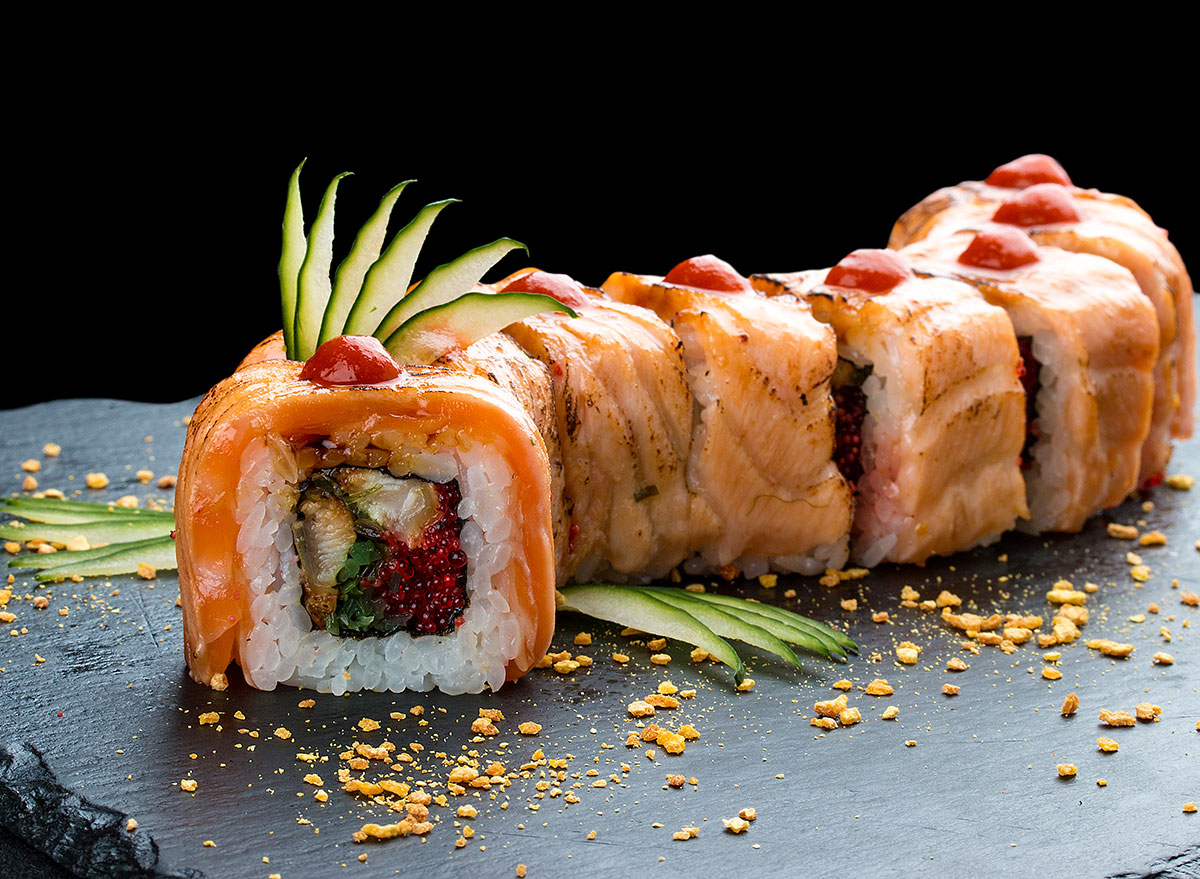
A standard sized Dragon roll, which is an eel roll topped with avocado and drizzled with sweet sauce, packs a whopping 570 calories total with over 20 grams of fat, 81 grams of carbs and 1,100 milligrams of sodium, Harris-Pincus points out.
"Considering that many people order 3 rolls for dinner, that's pretty hefty, too," she adds.
But let's consider the roll itself. That's a lot of calories for just one roll, and 81 grams of carbs from the rice and drizzle adds up. According to the Centers for Disease Control and Prevention (CDC), a carb serving is measured as 15 grams per serving, and women are allotted 3 to 4 carb servings per day (or 45–60 grams per meal), and men are allotted 4 to 5 carb servings per day (or 60–75 grams a meal). This roll is clearly way over the gram count per meal for both men and women, and this is just for the roll itself. It doesn't take into account any other foods you might be eating with that single roll!
If you eat too many carbs (and sugar from that sweet sauce drizzle!), you're contributing to increased risk of diabetes and heart disease, says Harris-Pincus. Plus, if you're trying to eat low-carb or watch your sugar intake in general, this roll is definitely a diet wrecker. And that's not even factoring in the amount of sodium, which can also add to that increase risk of heart disease, stroke, and high blood pressure, and cholesterol. (If you're looking for more helpful tips, your ultimate restaurant and supermarket survival guide is here!)
What should you eat at a sushi restaurant instead?
A better pick is a Naruto roll, which is usually made from fish and avocado, but it's wrapped in cucumber instead of rice.
"That makes it low carb with only about 110 calories and 13 grams of protein," Harris-Pincus says. If you're looking to eat less rice and lower the carb count, you can put the sashimi over greens or ask for light rice in your rolls, too. Another solid option is a plain salmon or tuna roll with avocado, which promotes better heart-health with unsaturated fat content.
Something else to keep in mind is you should always choose brown rice over white, or better yet, a low-carb alternative, such as a rice paper or, go for the option that serves the dish to you over a bed of lettuce. One study showed that people who chose brown rice over white lost more weight and had boosted satiety, as well as lower blood pressure.
As for starters, you can't go wrong with a garden side or seaweed salad, an appetizer of edamame (hello protein!) or miso soup, along with healthier picks for rolls or sashimi, says Harris-Pincus. Any broth-based soup works to fill you up so you eat less of the rolls or rice.
If you see a sweet sauce or any "tempura" terminology (which is just another way of saying fried), ditch it and go for a plain, sauce-free roll sauce-free without those crispy, crunchy bits on top.
"Preferably a roll minus words like tempura, crunchy, crispy and anything with sugary sauces," Harris-Pincus says. And choose one roll, rather than a bunch for yourself.
"For example, a classic tuna roll [from Benihana] has approximately 210 calories and a spicy tuna roll has 320, simply because that's 110 calories extra for the same amount of food, and the only difference is the spicy mayo," she says. Love the mayo? See if you can get it on the side and drizzle it yourself.
If you are still hungry, a few pieces of sashimi is usually 30-40 calories per ounce and nearly all protein unless you pick a higher fat fish, so it's an excellent option. Tuna and salmon are two great picks, for example. Now, you're ready to make the healthiest choice next time you head to a sushi restaurant!
